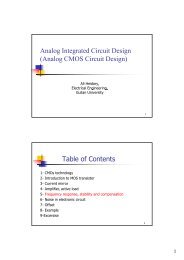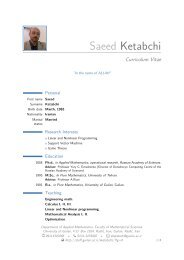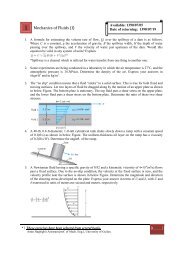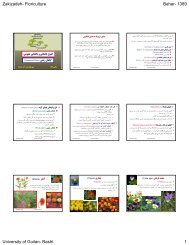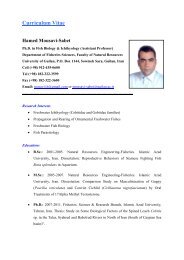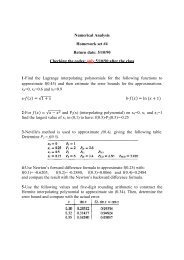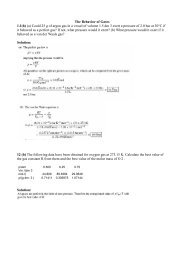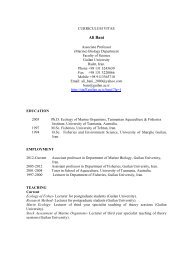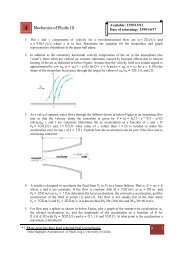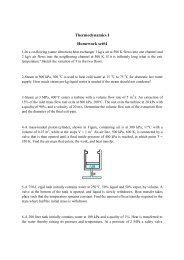Medical Tourism in Developing Countries
Medical Tourism in Developing Countries
Medical Tourism in Developing Countries
- No tags were found...
Create successful ePaper yourself
Turn your PDF publications into a flip-book with our unique Google optimized e-Paper software.
Offshore Doctors ● 57patient-doctor relations (Teh and Chu note the importance of cultural differences<strong>in</strong> medical care especially among the Japanese and Koreans who, forexample, do not challenge their doctor’s op<strong>in</strong>ion 64 ).A sense of cultural aff<strong>in</strong>ity also comes from shared language. Be<strong>in</strong>g ableto communicate with medical staff <strong>in</strong> one’s native tongue is reassur<strong>in</strong>g and,as a result, patients are drawn to countries where their language is spokenand past colonial ties still beckon. Indeed, the British go to India, Americansto the Philipp<strong>in</strong>es, Spaniards to Cuba, and Saudi Arabians to Jordan.Religion is sometimes a factor <strong>in</strong> determ<strong>in</strong><strong>in</strong>g cultural affi nity.International patients may choose a dest<strong>in</strong>ation accord<strong>in</strong>g to its dom<strong>in</strong>antreligion. In this way, Jordan attracts Muslims from the Middle East, andlately Malaysia has stepped up its efforts to attract patients from Islamiccountries. These efforts <strong>in</strong>clude assurances that patients will receive sensitivetreatment with respect to their religious observances such as prayers andfood. 65 Incidentally, religion may also be a deterrent for some <strong>in</strong>ternationalpatients who worry it might dom<strong>in</strong>ate their medical tourism experience.<strong>Medical</strong> establishments often reassure potential patients that they areembrac<strong>in</strong>g of all religions (for example, the Christian <strong>Medical</strong> College andHospital <strong>in</strong> Vellore, India, promotes its 1,700 bed complex as an <strong>in</strong>terdenom<strong>in</strong>ationalcommunity that is tolerant of diversity).Some <strong>in</strong>ternational patients feel cultural aff<strong>in</strong>ity for a region even if theyhave no roots there and do not speak the language. Perhaps they have traveledthere <strong>in</strong> the past and are comfortable <strong>in</strong> that environment.When there is no cultural aff<strong>in</strong>ity, promoters of medical tourism will tryto create it. Bumrungrad Hospital <strong>in</strong> Thailand for example, has built aculturally compatible w<strong>in</strong>g for Middle East patients to make them feelcomfortable. They hired additional Arabic <strong>in</strong>terpreters, they built a newkitchen to offer religiously acceptable food, and they purchased manyMuslim prayer rugs. 66 Malaysia has developed the Feel At Home Programfor West Asian tourists that <strong>in</strong>cludes Arabic and Middle Eastern food,songs, and dances. Similarly, the International <strong>Medical</strong> Centre <strong>in</strong> Bangkokprovides Japanese patients with a special w<strong>in</strong>g, pay<strong>in</strong>g particular attentionto religious, cultural, and dietary restrictions of its clientele. 67DistanceIn medical tourism as <strong>in</strong> the real estate bus<strong>in</strong>ess, three considerations areimportant: location, location, and location. <strong>Medical</strong> tourists travel to particularfacilities or countries <strong>in</strong> part because of where they are located.Proximity is among the most important geographical features. Clearly peopleare will<strong>in</strong>g to travel to receive medical care. If they were not, the <strong>in</strong>dustrywould not be expand<strong>in</strong>g. The question is, just how far will they travel?





